Bits, Bytes, and a Revelation – Melco S100/2
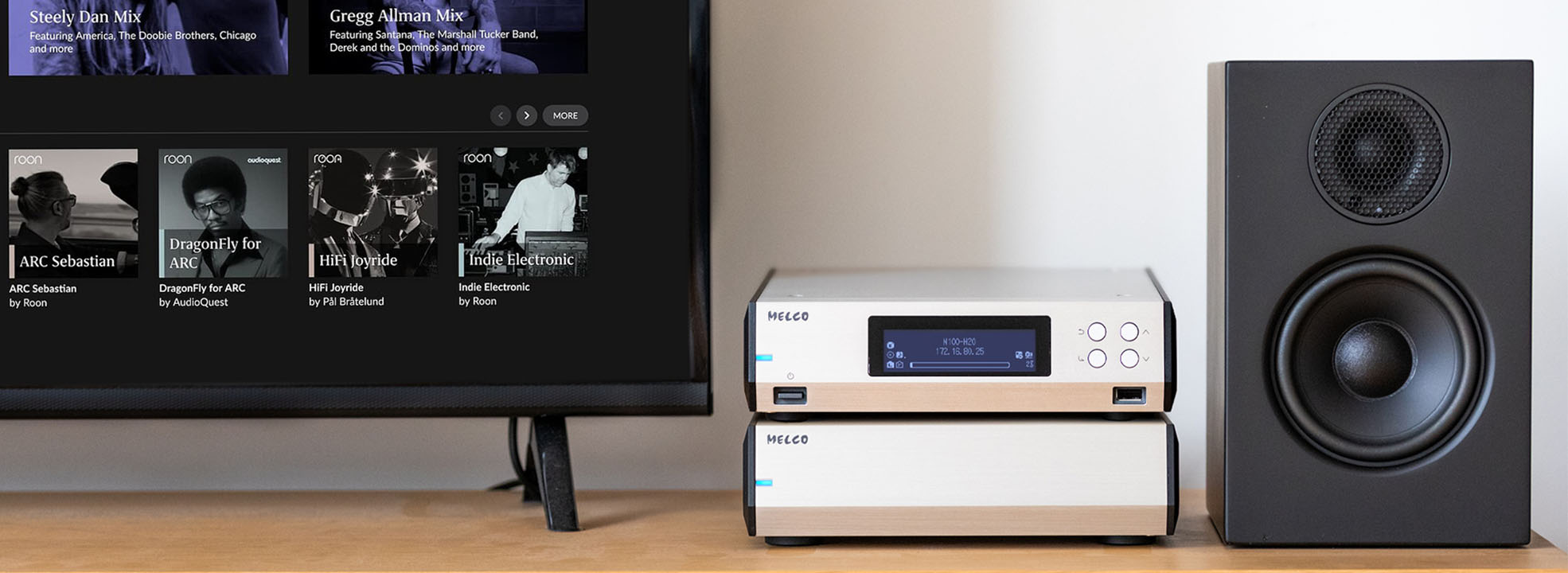
Bits are bits, and a bunch of them are becoming bytes.
This is a significantly delayed review for many reasons beyond my procrastination problem, which I fully assume. It is a burden of creative spirits, and I can assure you it is not something that we are proud of or we do not fight with every single day. We live in a highly information-crowded and very complex world. Urgences, task noise, or information pollution are all daily distractions for all of us, and sometimes, these reach all-time levels of interference. That is not an excuse; this is a reality.
And then, there were endless Facebook discussions about the role and importance of networking in high-end audio. Many started with, “I have been a networking engineer for 25 years, and I can assure you…” There is always someone who reminds us of the technology standards behind all this and emphasizes the probable bias we are trapped in. Are they wrong? Are we biased, and we hear only what we want to hear?
On top of that, here comes the endless overpriced network components labeled as “audiophile switches” in disguise. Many will not bother more than applying a hi-fi mark on a 25-buck ordinary switch and adding a 20 times price label. This makes it more challenging to discern and understand what it is about. It is a trap for many of us who are taken aback by even higher prices.
Before I write my review about the Melco S100/2, I want to take a moment to reflect on its significance. To fully appreciate this high-end switch, we need to understand its unique perspective, which differs from that of standard network equipment. This requires some background knowledge, so let’s dive in and explore this new type of hardware.
And to answer all the network engineers, myself included, yes, bits are bits, 1 bit can be only 0 or 1, and 8 bits equals 1 byte. There is no doubt about that.
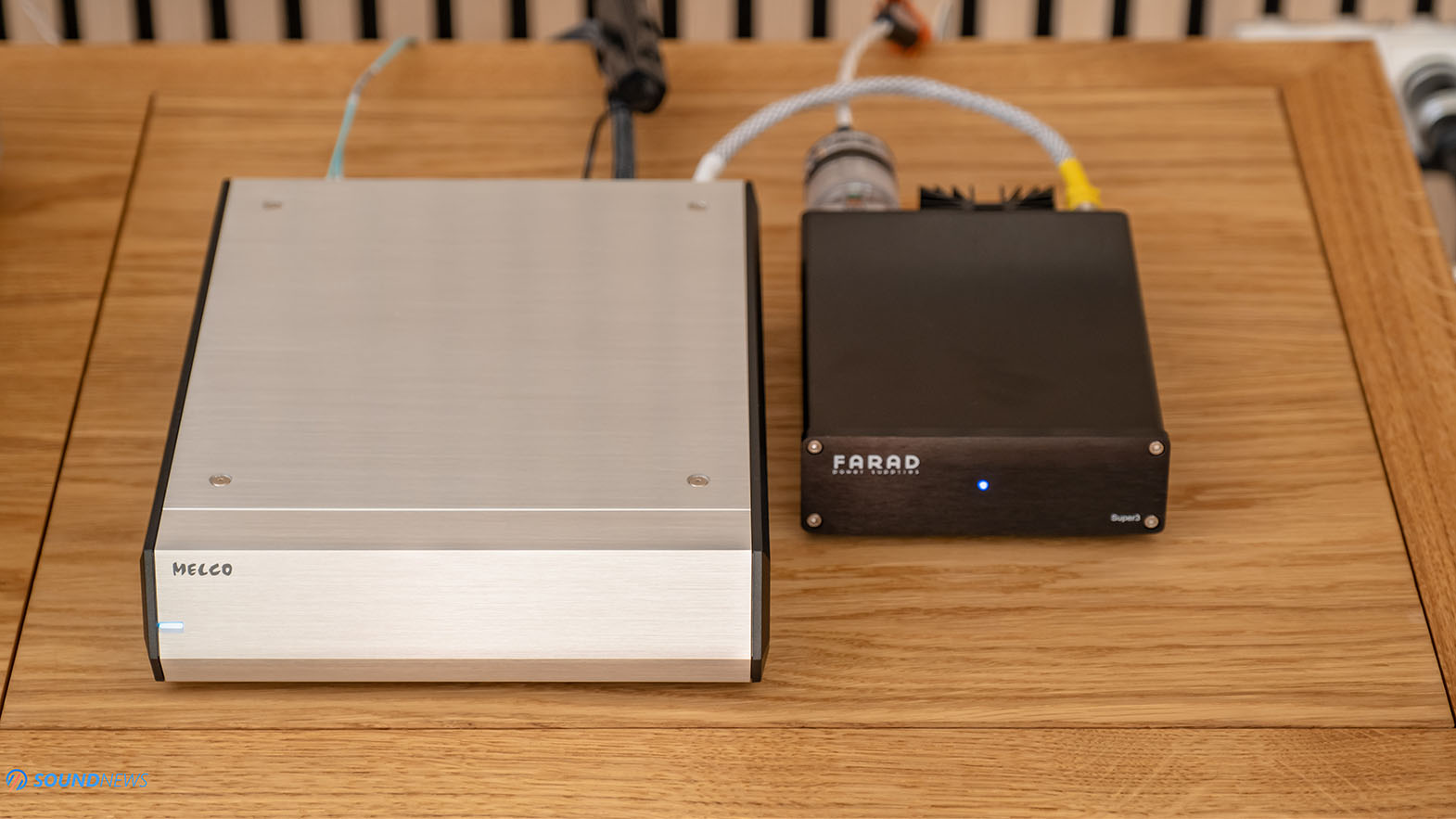
How does Ethernet work?
Wikipedia writes that: “Ethernet is a technology that specifies software (protocols, etc.) and hardware (cables, distributors, network cards, etc.) for data networks. The data frames are transmitted in the LAN (Local Area Network) either wired (copper or fiber optic) or via a radio network in the WLAN (Wireless Local Area Network).”
For routers or switches, some specifications are usually classified with an IEEE (Institute of Electrical and Electronics Engineers) in front and a number. These standards have been set uniformly since 1980 by a global professional association based in New York. And so there is an IEEE 802.3 Tagged MAC Frame, which describes the standard format of Ethernet data transmission blocks.
For example, each network interface has a globally unique 48-bit key called a MAC address (Media Access Code), which is included in the data transmission block. The destination and source MAC addresses are specified so the data arrives correctly from the source to the right destination.
The CRC checksums are also necessary. When a packet is created at the sender, a CRC calculation is performed over the bit string, and the checksum is appended to the data block. The recipient performs the same calculation after receiving it. If the received checksum does not match the self-calculated checksum, the receiver assumes an incorrect transmission, and the data block is discarded and requested again. This is also the standard argument of those who make fun of Ethernet optimizations. The data must always arrive bit-perfect. But this is only half of the story.
Again, to set the baseline, Ethernet will always be bit-perfect even if influences and minor hiccups occur; the error correction embedded in the protocol will correct that. Also, the correction mustn’t be necessarily time-critical!
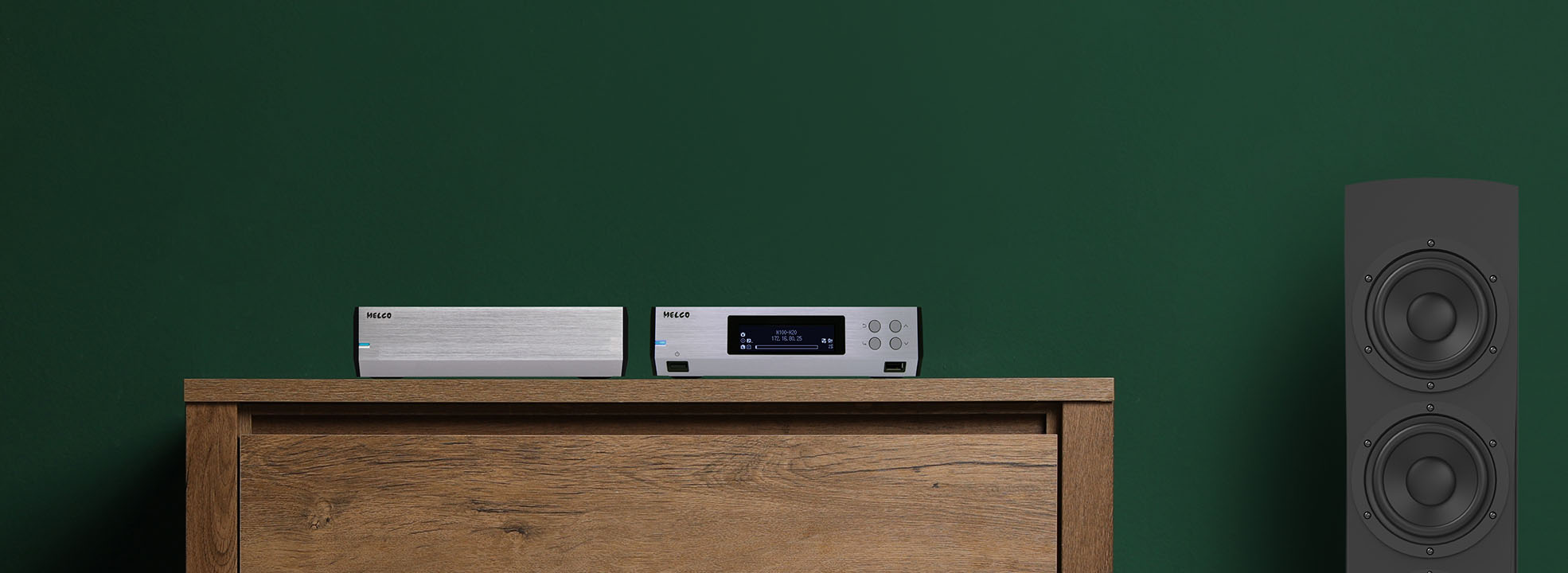
Transmission frequency.
It is essential to know that the bits and bytes are transmitted using analog radio frequency (HF) technology. There are various standards for this. A Cat5 cable transmits data at a frequency of up to 100MHz and thus achieves a maximum rate of 100Mbps. A CAT6a cable transmits up to 500MHz with a maximum throughput of 10Gbps.
What is to remember here is that even though we are talking about a digital transmission, it is, in fact, an analog one. The frequency may lie outside the audible band but still be audible in some circumstances. High-frequency components can become very parasitic in devices when they demodulate the useful signal. For example, if you come close to a tube amplifier with your smartphone, you will hear radio signals in the GHz range.
Yet to remember, all digital transmissions rely on analog radio frequency transmissions between the modulation/demodulation equipment. What we call digital, clear 1 and 0, sits at the end of an analog transmission.
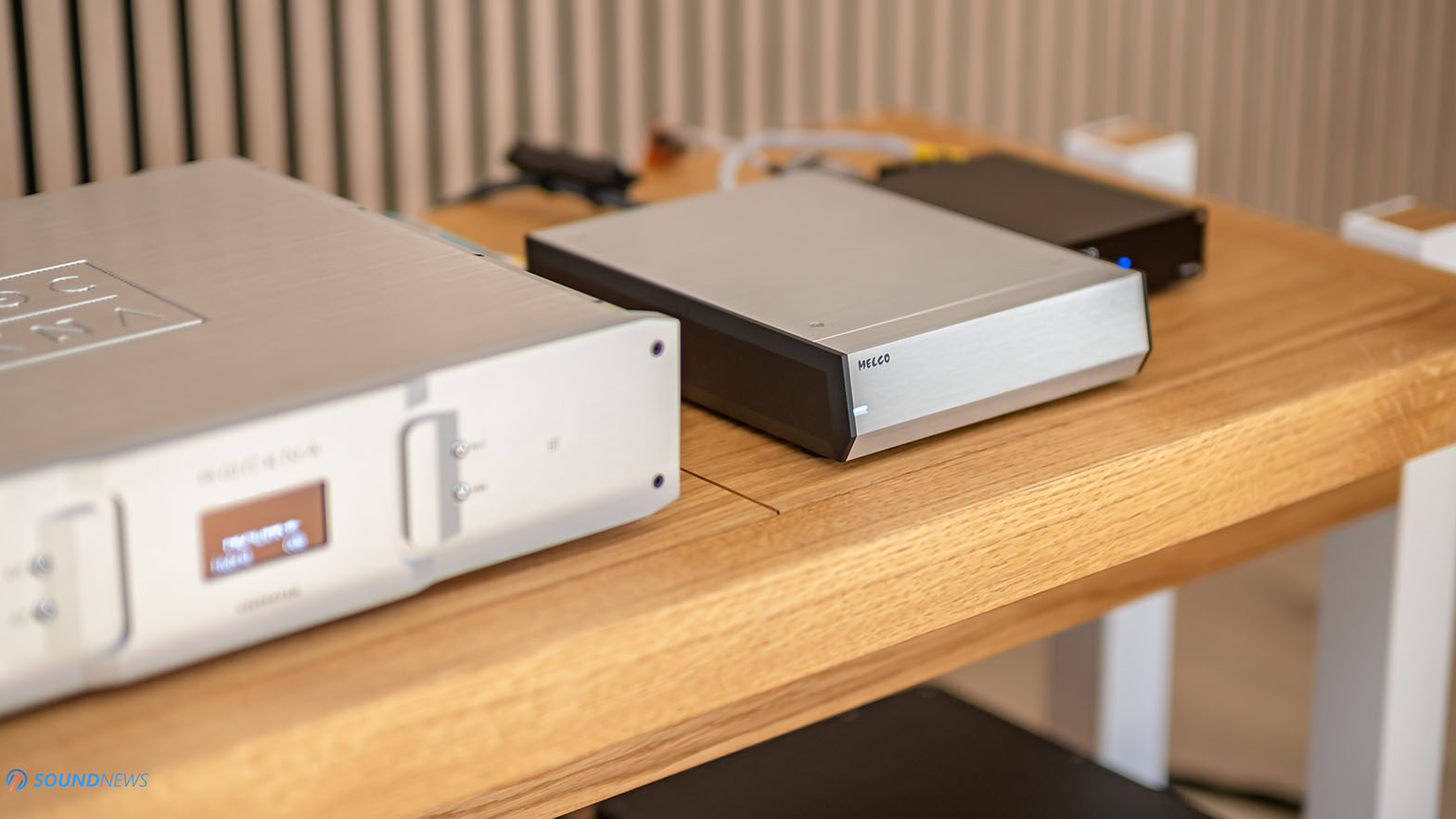
Eye pattern diagram.
The eye pattern or eye pattern diagram allows conclusions to be drawn about the quality of the signal. An oscilloscope is used to overlay successive waveforms to form a composite image. The picture below defines the voltage state from which a binary 0 or 1 is present on the ordinate (vertical y-axis). The time course is indicated on the abscissa (horizontal x-axis) — for example, the voltage states and the time course result in a bit sequence of 011 (yellow color in the graph).
Ideally, the eye diagram for digital signals would consist of two parallel lines with instantaneous rise and fall times virtually invisible. In the real world, even a reasonably good and quite acceptable digital signal will exhibit some amplitude and timing variation, appearing as discrete lines that are not precisely where they belong but will nonetheless suffice. If there are enough of them, darkened areas will appear.
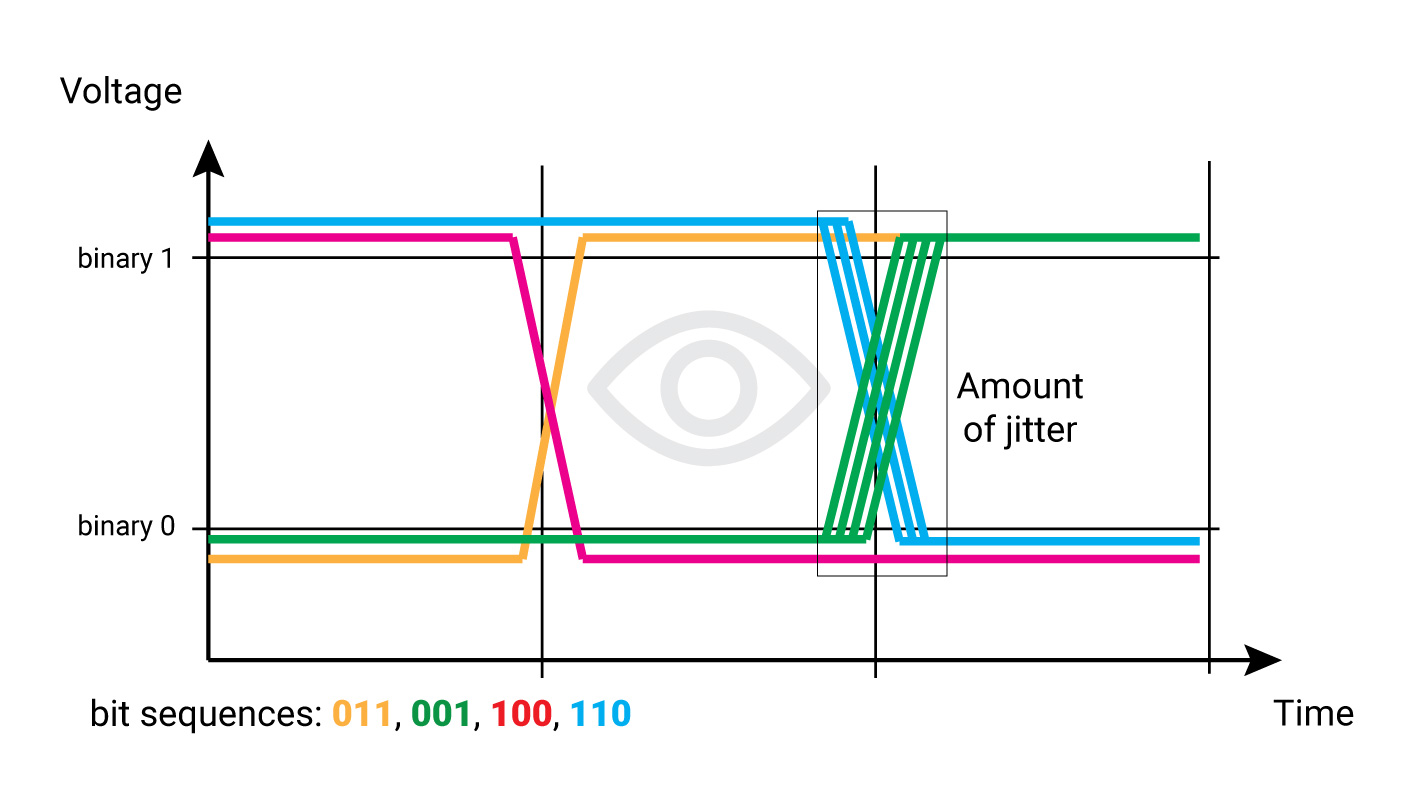
In digital transmission, a succession of ones and zeroes flows to the receiver. The transmission can consist of a long series of ones, a long series of zeroes, a regular or irregular sequence that repeats periodically, a quasi-random series, or any combination. The eye diagram will reveal whether everything works as intended or if there are faults that garble the transmission, causing, for example, the reception of a zero when a one has been sent.
While latency defines a fixed time between two events, jitter describes the fluctuations within this time. These fluctuations can be measured in the eye pattern diagram at the intersections of successive waveforms.

The signal quality is okay if you see a big eye in the middle of the different bit sequences on the oscilloscope. Disturbances in the voltage curves, for example, shifts due to jitter or too low a slope in the edges, can lead to misinterpretations of the bit sequences. The checksums detect the faulty data packet, but data packets are lost if this happens too often and must be requested again.
Here is something else to keep in mind: jitter is the time error fluctuations between events. Disturbance shifts due to jitter can lead to lost data packets.
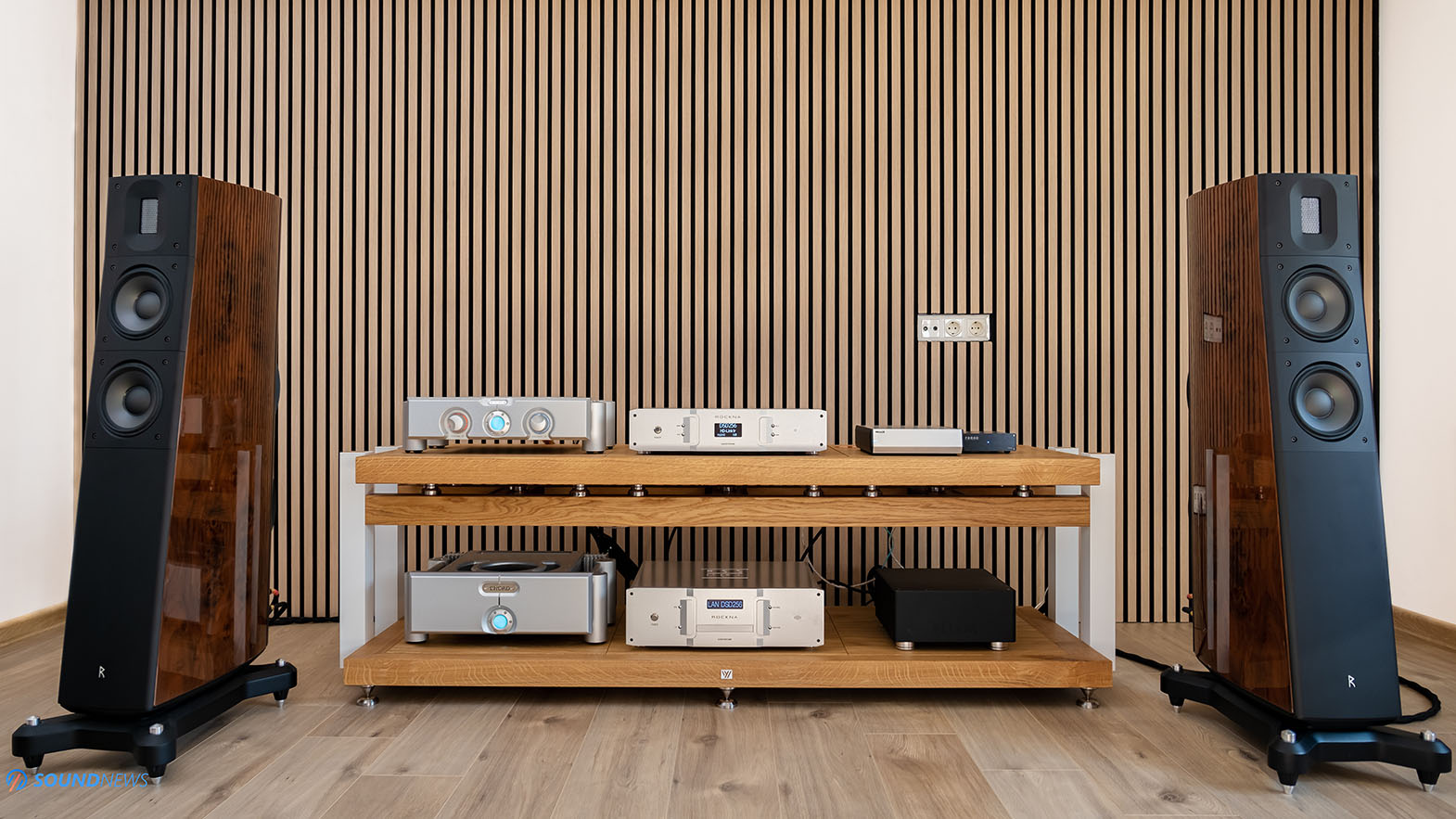
Bit-perfect doesn’t mean it sounds good.
After so many words, let’s try to conclude here why, even if at the receptor ends, bits are always bits, and even if an error occurs, it will be corrected; it still is not enough from the sound quality perspective.
Why bit-perfect transmission doesn’t always sound good:
- The noise from the hf analog transmission will find its way into the receiver.
- The modulation/demodulation of the analog transmission to and from digital will create even more noise.
- Errors will generate time delays, which, in the extreme, can lead to sound artifacts or even dropouts.
- Error correction will lead to a request for the same package, which will add to the noise from demodulation and increased network traffic, creating more and more noise.
- Even if the time delay is not immediately apparent by noticeable artifacts or dropouts, our brain is susceptible to any delay, and it will become evident more subtly, profoundly affecting the sound quality.
- Standard switching power supplies are known for high-frequency noise generated; even if measures to filter the noise inside the equipment are in place, there is rarely a filter for the same noise generated going to pollute the other equipment through the power grid or just by being close to it.

What is perfectly fine for simple data transmission may not be so good for music playback through network streaming. All that noise added to the signal and time delay that will create blur and flatness will permanently damage the signal going into the final conversion from digital to analog in what we call DAC. Transmission is compromised from an audio perspective due to timing errors, which will never be recovered on the one hand, and the gathered noise will be very hard, if not impossible, to clean after all on the other.
That is why, in recent years, while our musical equipment has become more and more revealing, the impact of network and streaming equipment has become more and more apparent. A new bread of network equipment has been born – the pretentiously named audiophile network switch. And with that, a new network philosophy dedicated to the audio-conscious aficionado.
The Audiophile Switch and Separated Network setup.
Basically, it’s always a good idea to separate the network for audio from the rest. Some people use a second router for this and have had excellent experiences with it. Alternatively, a dedicated switch is used in the example, which enables significantly better qualities than a router can offer.
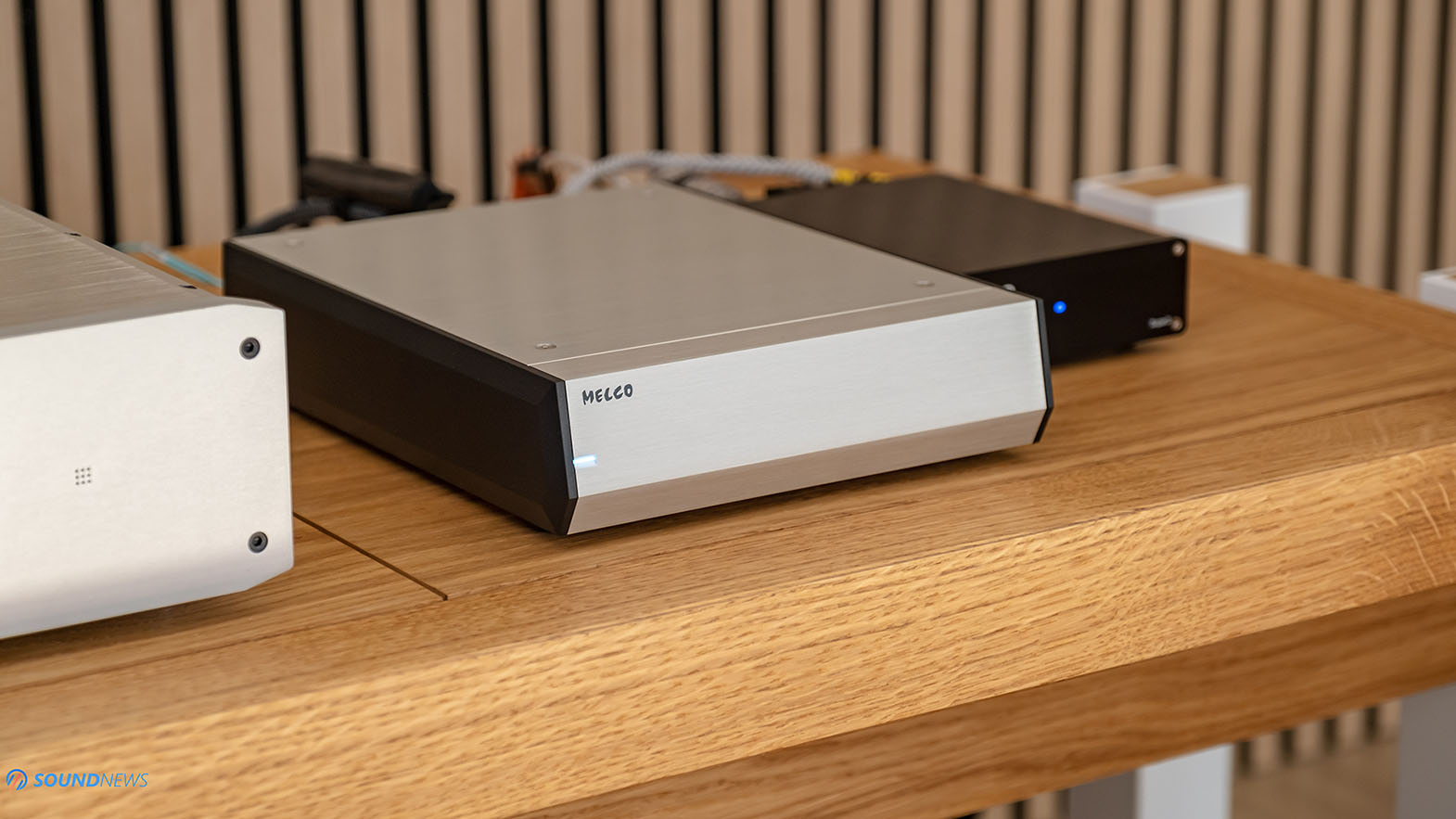
Separating the network.
The main idea behind the audio-separated network from the rest of the traffic is straightforward: connect the streamer to the music server through a direct connection with the help of an audiophile switch. This is highly dependent on the server capabilities – 2 network ethernet ports, one connected to the outside (primary) network, and internet, and one connected to the streamer through a switch, which will separate once more from the ethernet noise, galvanically or in another way the streamer. I discovered that keeping the network traffic to a minimum will have significant, audible benefits. If your server does not have two ethernet ports, the same isolation can be obtained by using two switches, one on the server side and another on the streamer side.
Besides physical network isolation, and if that is not possible or too complex, some other software tricks can be used to achieve a logical network separation:
- Enabling IGMP Snooping and Filter Unknown Multicast.
- Use QoS (Quality of Service) to prioritize critical network services in real-time.
- Isolate the audiophile network from the home network using VLAN (Virtual Local Area Network).
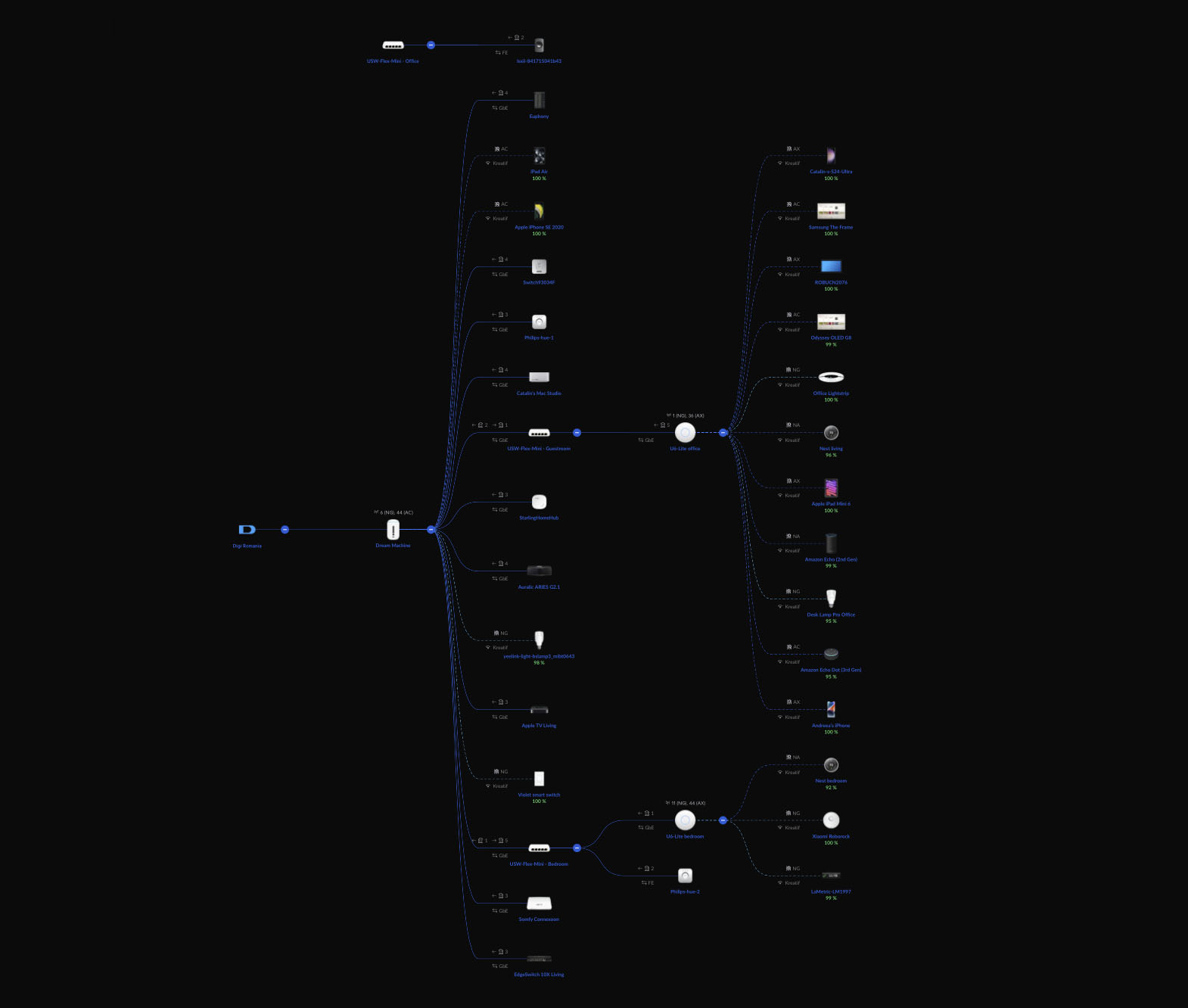
Using high-quality power supplies.
The power supply is critical in keeping the noise floor as low as possible, not just inside the powering equipment but also not negatively influencing the other highly sensitive equipment nearby. Linear power supplies have a very low noise floor and stable power output. Also, it will not pollute the grid and the adjacent equipment. Some will swear that high-quality switching power supplies are faster and more appropriate for networking equipment. Finding a perfect switching mode power supply is difficult and usually costs much more than a decent linear one.
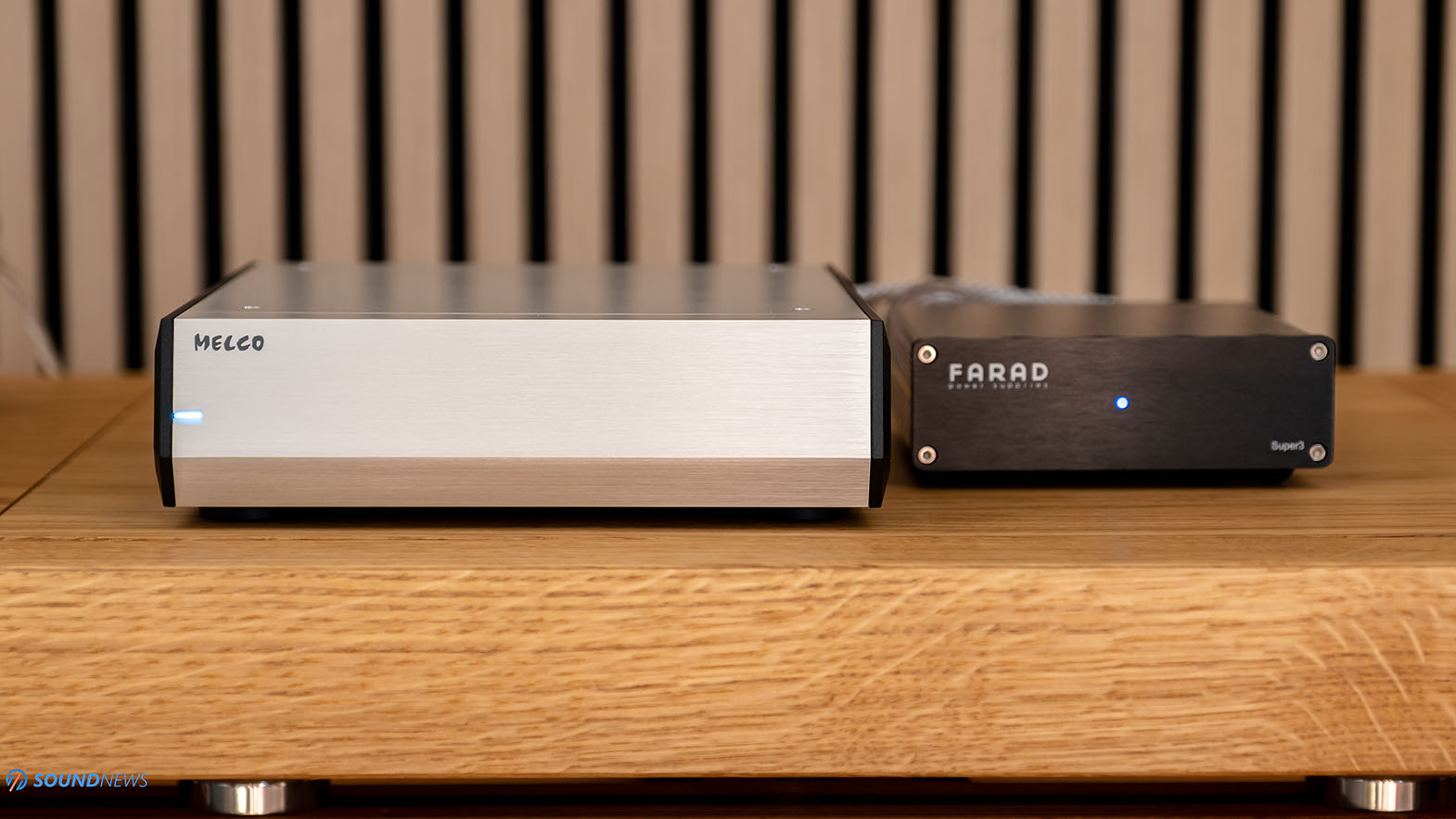
Use a fiber optic network connection.
Another trick in audiophile’s sleeves is the fiber optic connection. Replacing the ethernet copper cable with fiber optic has many advantages: from the small form factor that will be so much easier to route through the house to the replacement of the electric conductor that caries high-frequency noise with light, perfect galvanic isolation of disruptive high frequencies or stray potential equalization currents.
It will be ideal to connect the fiber optic cable to the switch. If that is not possible, MC (media converter) equipment must be used to convert the light to the current into an ethernet connection. And even if the audiophile switch possesses an SFP (small form fiber optic transceiver) port for connecting directly to the fiber optic, it is still unlikely that the server or the other equipment will also have an SFP port. So, at least one MC will still be needed to use fiber optic as a connection.
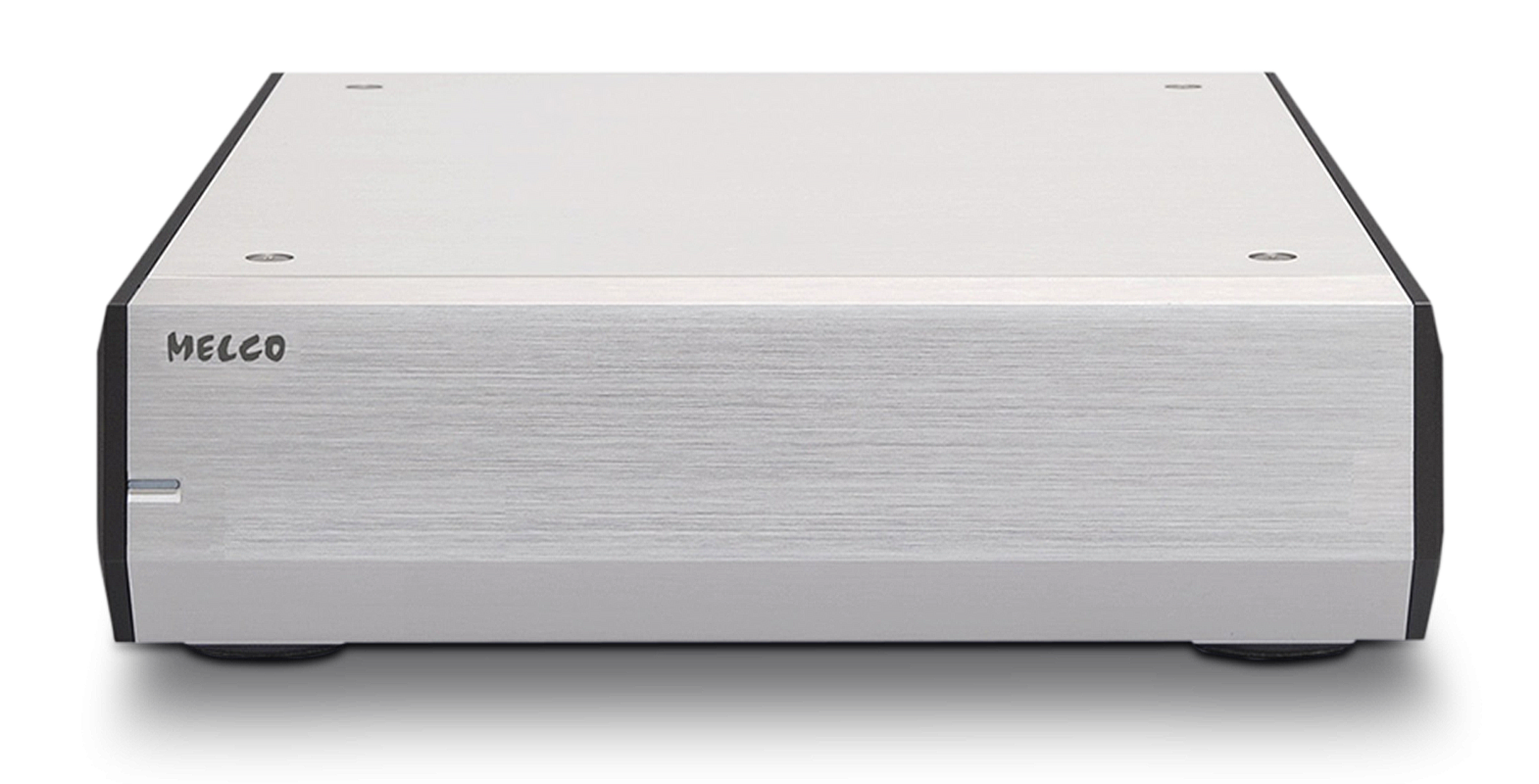
Use an audiophile switch.
The ideal switch itself should have a few key characteristics:
- High-quality components: generally used in industrial network equipment with a very low latency.
- An oven-controlled crystal oscillator (OCXO) with the lowest phase noise. The objection will come from the technology group that, in today’s systems, the clock in the DAC always wins due to the asynchronous transmission. This cannot be contradicted, but good clocks still have a significant sound-promoting influence on the signal path before the DAC.
- Great attention to a clean power supply via a linear power supply.
- The ideal option is to connect LWL (fiber optic cable), a.k.a. an SFP port.
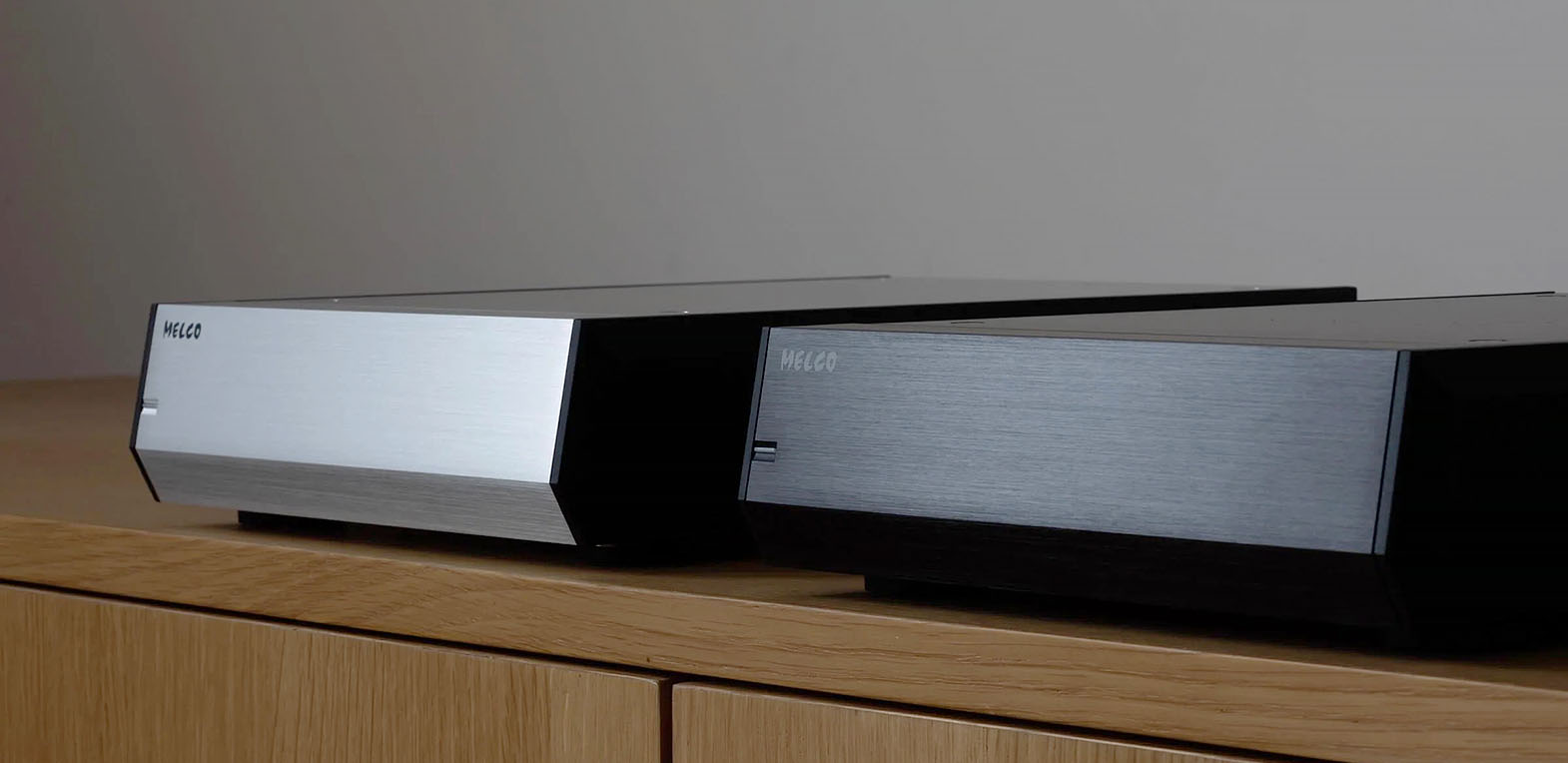
Strangely enough, cascading.
Connecting several switches, one after the other, positively affected the sound. Like in an aquarium, it is as if a filter function appears multiple times, and the filter effect improves with each additional switch, meaning the water becomes clearer.
That may seem to be overkill, but… there are two factors here, at least in my configuration:
- I use another audiophile switch instead of a cheap media converter to translate the server connection from ethernet to optic. The benefits could come only from this, and
- Cascading two switches is helping me to share the audio-only part of the network with my desktop headphone setup. Also, this configuration is helping me to connect everything entirely with fiber optic (from the server to the first switch and from the first switch to the second).
And yes, I can confirm that connecting the second switch directly to the server and eliminating the first would negatively impact sound quality. It is not something extraordinary, but it is audible. I must admit, the main reason for me is to fulfill the possibility of partitioning the audio network into two places (headphones and speaker systems) and using fiber optics everywhere as connections.
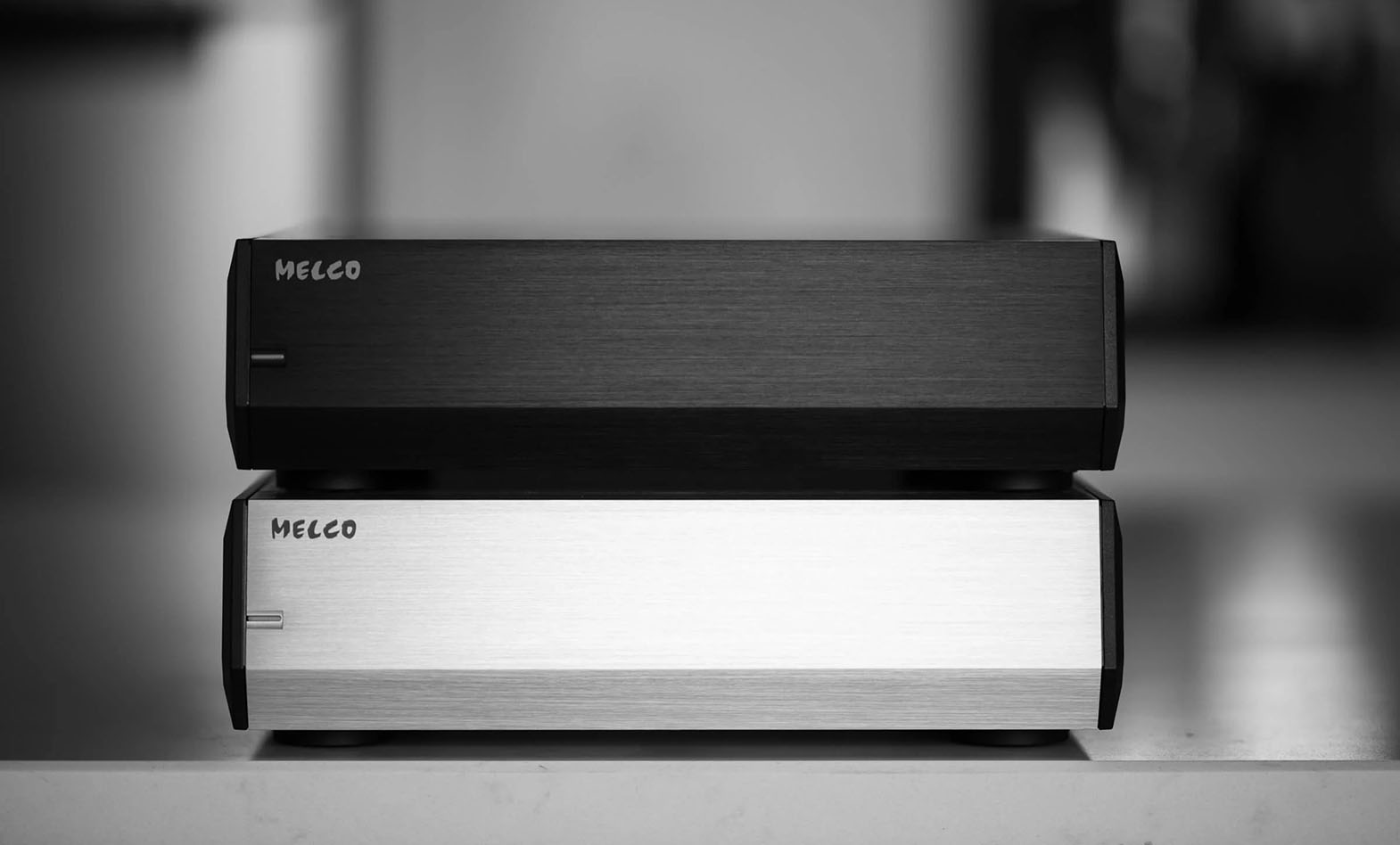
Audiophile switch – Melco S100/2
In high-end audio, the significance of network switches, designed explicitly for audiophile applications, has become increasingly apparent, and I have already explained the reasoning and benefits behind it. Melco Audio, a pioneering name in the field, has introduced the second-generation S100/2, an evolution of their acclaimed S100 network switch. While retaining the stainless steel construction and familiar appearance, this new iteration brings crucial enhancements to the power circuit and network interface configuration:
- Specially designed for audio, Melco is backed by the powerful brand Buffalo.
- 1.5MB buffer capability for stable and reliable data.
- 10 network interfaces: 2 are SFP fiber optic interfaces (compatible optical fiber components such as Lumin and Linn), and 8 are RJ45:
– LAN Ports 1 and 2: 100 Mbps
– LAN Ports 3–8: 100/1000 Mbps
– SFP Ports 8 and 9: Max. 1000 Mbps. - There are two speeds: pure 100M/Fast Ethernet and 100M/1000M/Gigabit Ethernet.
- The improved power circuit board and audiophile supply implementation with a bank of audio-grade capacitors ensures the lowest noise.
- Power supplies are external to the switch, allowing good isolation and future upgrades.
- Mechanical stability improves system performance: the S100/2 is built on a rigid steel chassis.
- LED light off function.
- Made in Japan, designed and produced in Japan.
- Available in silver and black.
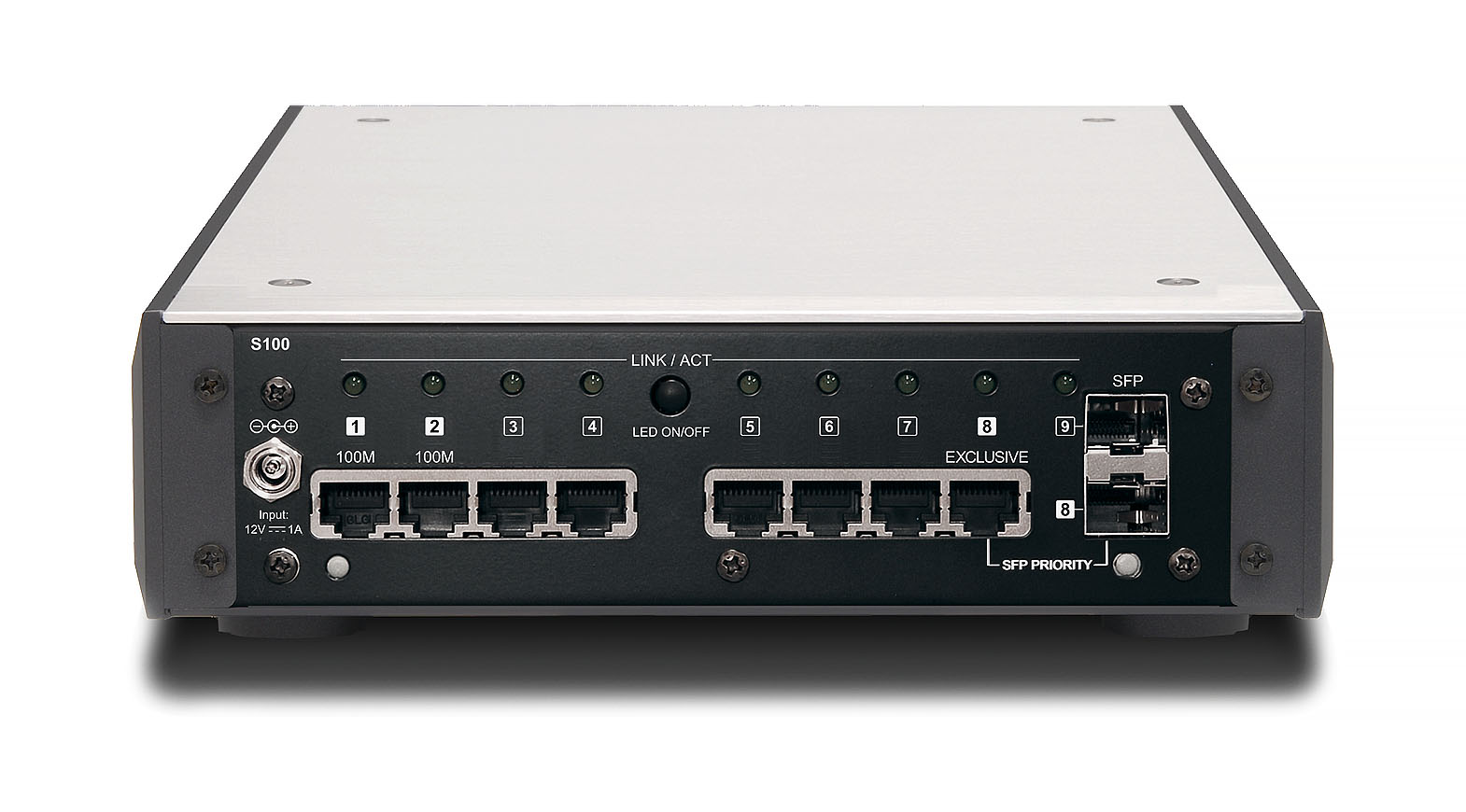
With the S100/2, the configuration shifts slightly, with interfaces 1 and 2 retaining 100 Mbs specifications, interfaces 3 to 8 now supporting 100 Mbs/1000 Mbs, and interfaces 8 and 9 designated as SFP fiber interfaces. This alteration provides a flexible balance, recognizing that 100 Mbs speeds suffice for digital streaming audio equipment, prioritizing stable transmission quality. At the same time, 100Mb/1000Mb interfaces are recommended for data-intensive devices like NASs and routers.
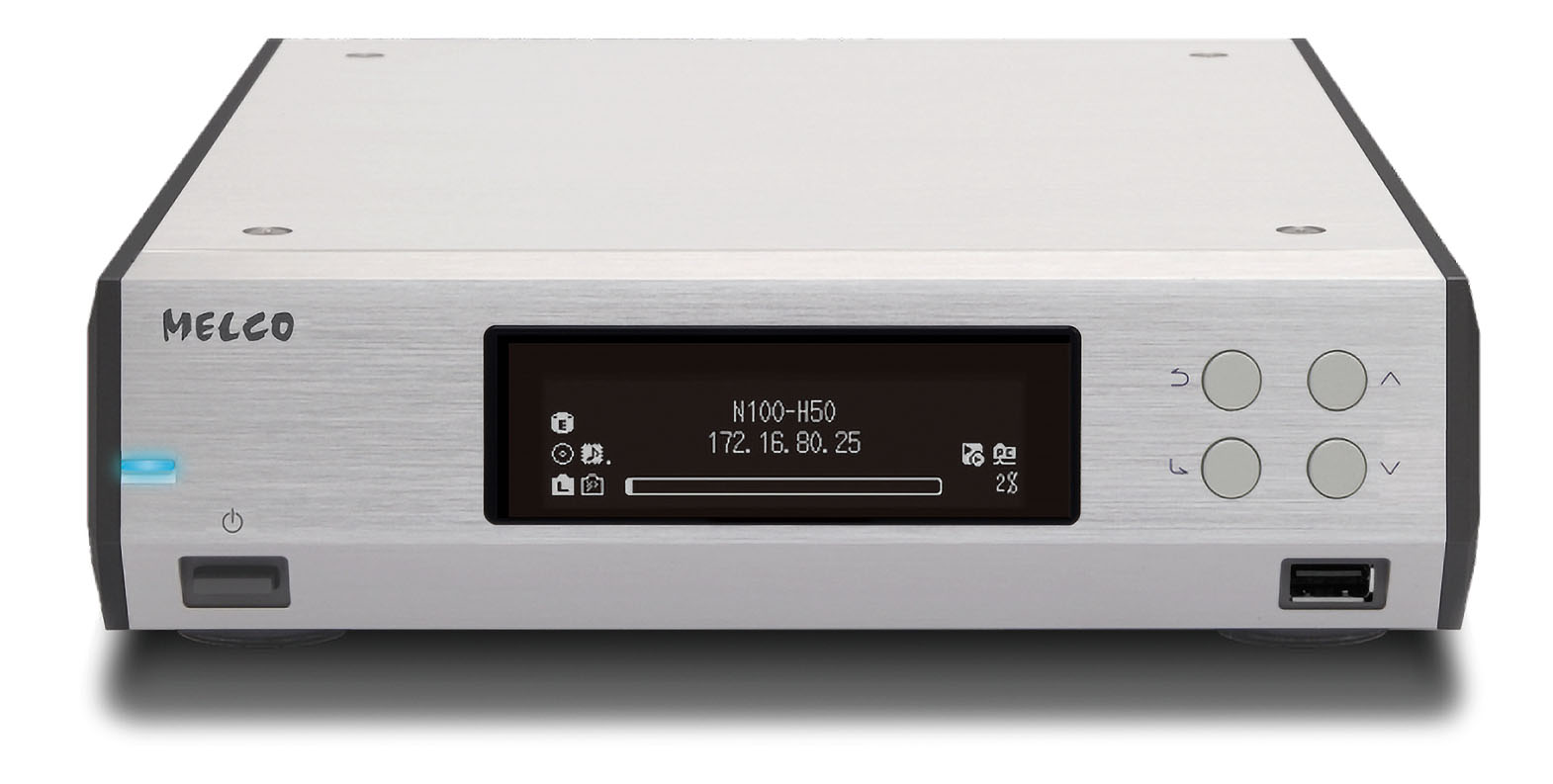
Design & Build Quality
I must confess that the first Melco equipment I got was their entry-level streamer and music library, the Melco N100. I had the chance to test the Melco N100 streamer through the kindness of the Melco dealer, AV Shop.ro, and I liked it so much that I had to get it for my headphone system.
Starting with the design and finishing with the fabulous sound quality, N100 is a high-quality streamer and library. The attention to detail goes beyond the price point; Melco even chose to provide a 12V input for the power supply, and this way, the upgrade to a high-quality linear power supply is pretty straightforward.
The S100/2 audiophile switch follows the same design approach and form factor as the N100 streamer. The rigid steel chassis inherited from the streamer and the excellent back layout with all the ports laid out, power input, and a specially dedicated switch for LED light-off function show special attention to all the details, especially to preserving the best signal quality.
It can be stacked together with the N100, and it will look really cool. It comes with a low-noise switching mode power supply, but the upgrade to a linear power is recommended, and it can be done very quickly using the input 5.5/2.1mm port. I highly recommend using an incredible performance linear power source: Farad Super3 with a tiny footprint, super capacitor power bank, extreme quality wound transformer, six pi-filter sections, double regulation, and a friendly price tag.
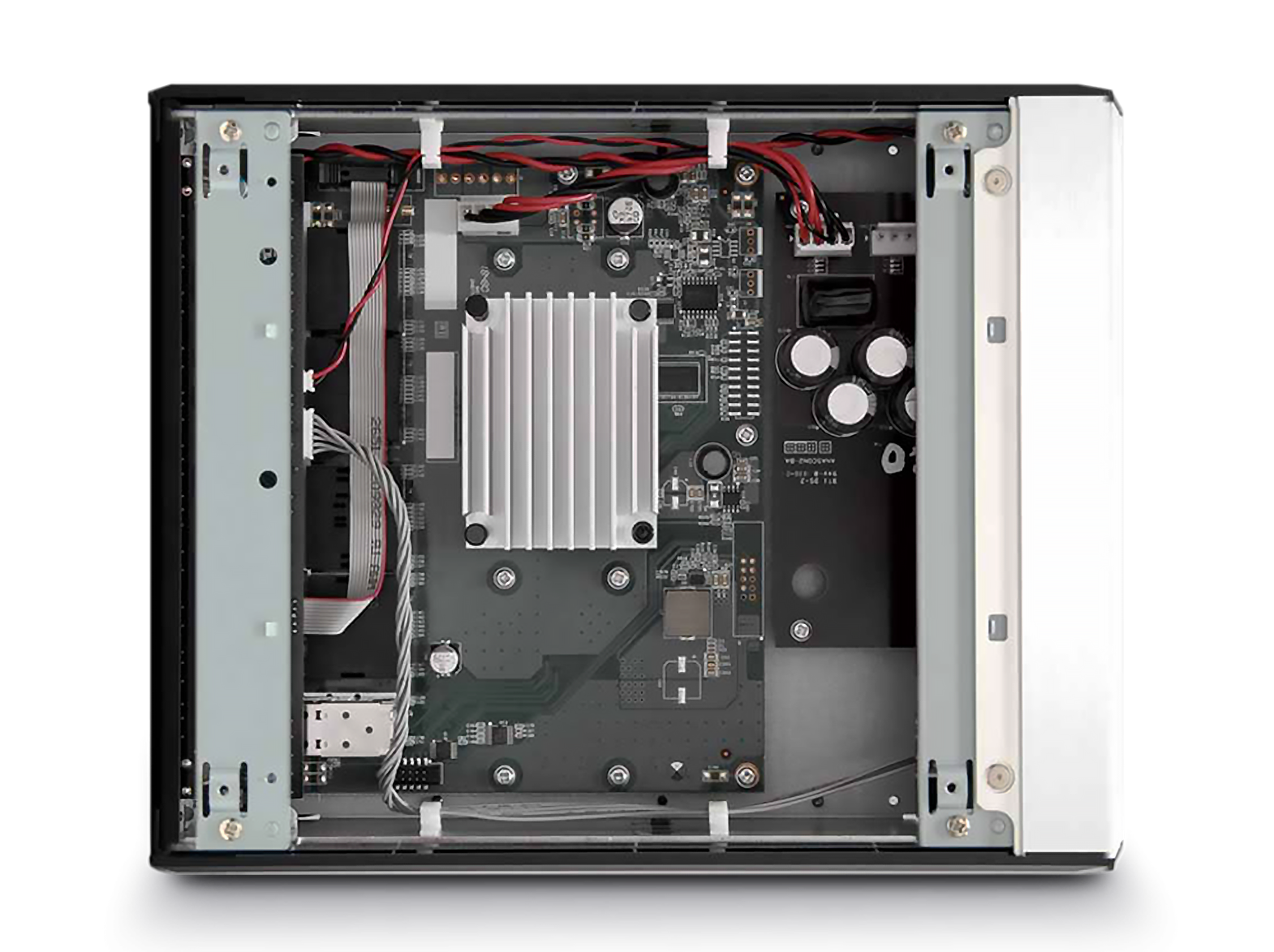
Under the hood of Melco S100/2
The inside of Melco S100/2 is not something you will recognize in a standard TP-Link switch. A power supply filtering, a large motherboard with an unexpected serious heatsink, and galvanic isolation of RJ45 ports. But the most exciting aspect lies outside of what the eye can see. In the product details, we can read – 1.5MB buffer capability for stable and reliable data. That is the most essential aspect, and I will try to explain why.
We must remember what jitter is – time error fluctuations between events, the events being each ethernet packet arrival. So, the jitter can happen only in a real-time event communication. What is the purpose of that not-so-large buffer implemented by Melco? Well, precisely that – killing the jitter. How? Storing each data packet in a buffer memory means that the arrival of each packet, the error in timing of arrival, and the jitter itself are no longer relevant. The switch will constantly process the data from the buffer with instant access without any timing error. The errors will be kept outside of the buffer zone. Of course, suppose the errors are so severe that the buffer will become empty without constant replenishment from the network – in that case, the communication will be stopped until the data stream is present again and the buffer is loaded. The buffer may not seem significant at 1,5 Mb, but it may be the ideal value to eradicate the jitter and keep the communication and control upstream in real time. That means it is small enough to be discarded quickly if stored data is no longer necessary and, at the same time, large enough to ensure a constant jitter-free stream for the processing part of the switch to work with.
This buffer-type storing mechanism is not new; high-quality streamers have implemented it for some time. The difference is that the streamers will not store jitter-free network communication packets but final decoded data, which some jitter time distortion can have already altered. It is a good strategy, and now implemented at the very source of the data stream, it is making a lot more sense. I do not know about every switch specs out there, but it is the first time I have encountered this technology implemented in an audiophile switch.
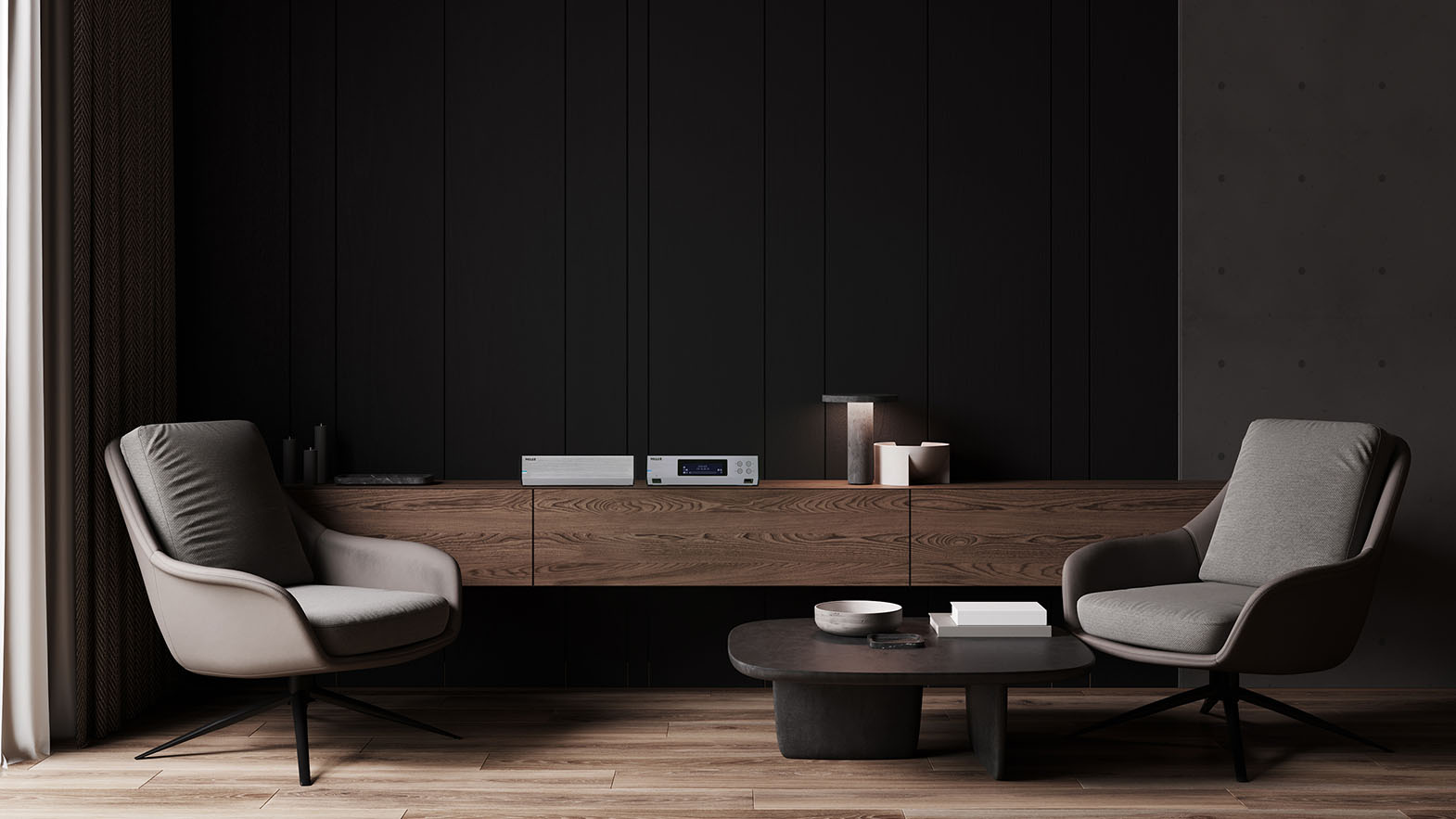
The Signal Path
Before getting very deep into the sonic impact of S100/2, let’s review the system I used for testing and comparisons:
- Custom build Roon Server connected with 2 RJ45 ethernet ports to the main network (and the internet respectively) and a high-quality media converter, LHY Audio FMC (learn more here)
- The fiber network will reach the first switch, LHY Audio SW-10, also used for comparisons in this review, as a loaned unit from my friend Sandu, and you can read a full in-depth review here.
- Another fiber connection from the first switch will continue for about 25 meters to the speaker system, where the Melco S100/2 enters the scene
- Melco S100/2 powered by FARAD Super3 linear power supply
- From Melco S100/2, using one of the two particular dedicated ports (100 Mbs) and an AudioQuest Diamond RJ45 cable, we reach the streamer
- Auralic Aries G2.1 streamer connected to the Melco S100/2
- Auralic Vega G2.1 DAC or Chord Dave DAC
- Chord Ultima Pre3 preamplifier and Chord Ultima 5 amplifier
- Alternatively, a Trafomatic EOS valve integrated amplifier
- Raidho TD 1.2 speakers
I tested alternatively as the source for the streamer:
- LHY Audio SW-10 switch with Melco S100/2 as the first switch
- Melco S100/2 with SW-10 as the first switch
- SW-10 or S100/2 directly connected to the server as the single switch
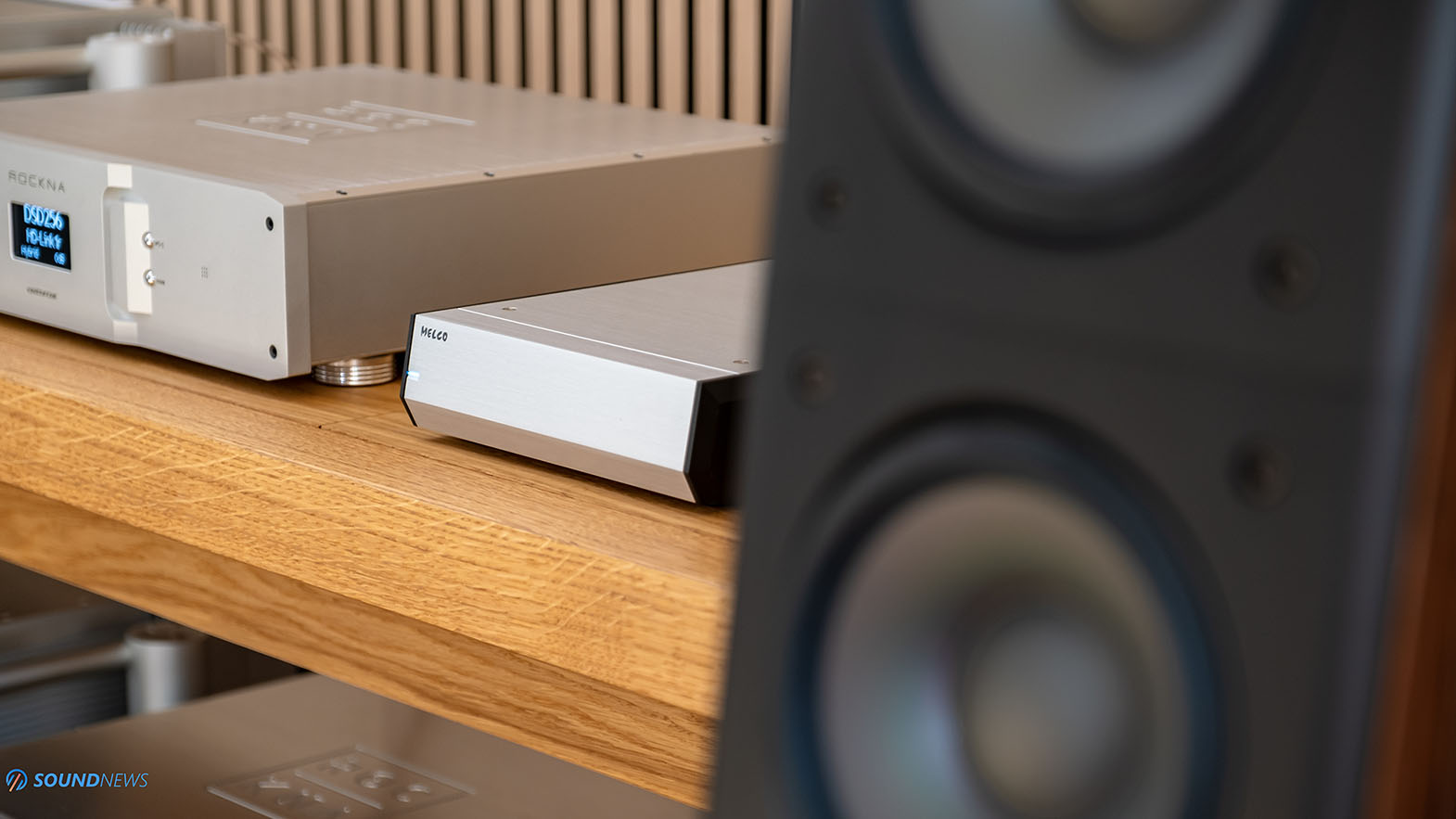
The Sound Impact of Melco S100/2
The Sonic Transformation
I tested and used different switches, audiophile or not, for some time. I started with cascading TP-Links and fiber-optic galvanic isolation with media converters and continued with better power supplies for the network equipment and entry-level basic audiophile switches. I ended up here after tons of testing, trial, and error, and not so fun any more comparisons.
So yes, Melco S100/2 is the most accomplished switch I have had the chance to test until now. And when I write this, I think about sound quality alone because technical details are useless without sound improvements. Melco Audio’s S100/2 significantly improves sound quality, taking the listening experience to new heights. This transformative change is characterized by several key attributes that highlight the remarkable impact of the S100/2 on audio quality:
Enhanced Depth and Background
One of the most noticeable improvements is the music’s profound sense of depth and background. This increased depth creates a calm and spacious setting where the music can come to life. The background is now exceptionally peaceful, providing a foundation for the music to stand out. The level of stillness and quietness in the background is remarkable, allowing one to fully appreciate the contrasts between the moments of tranquility and bursts of dynamic energy.
Refined Dynamics and Separation
The S100/2 has successfully improved the dynamics, separation, and contrast of music. This has resulted in a clearer definition of the highs and lows, providing a cleaner and crisper soundstage. The dynamics have become more expressive, and the instruments and vocals are distinctly separated. These enhancements contribute to a heightened sense of realism, making the music more engaging and emotionally resonant.
Fullness and Texture
The S100/2 enhanced the tonal qualities of music. It adds a touch of fullness and texture, infusing the sound with roundness and moisture, resulting in a lush listening experience. Specifically, the device helps to improve the vocals, giving them a more solid quality and creating a pleasant balance between weight and detail. The added fullness and texture also enhance the overall musicality of the sound, providing depth and warmth to the listening experience.
Vibrant Energy and Impact
The most significant change that stands out is the vibrancy and impact of the music. The audio has a newfound liveliness and energy, making it feel more dynamic and alive. The presentation of the music is characterized by a sense of vigor and vitality that captures the essence of the performance. The music comes to life with an infectious enthusiasm that draws listeners into its vibrant embrace.
Emotional Resonance
The technical superiority of a sound system is not enough to create a truly engaging musical experience. The fullness and dynamics of the sound must work together to create an emotional resonance within the music. This transforms the music from a mere collection of sounds into a conduit for emotions and storytelling. The rich, full-bodied sound and lively dynamics infuse the music with an emotional depth that allows listeners to connect with the artist’s intent and the mood of the composition. Whether it’s the melancholy melody of a blues guitar or the exhilarating crescendo of an orchestral piece, the S100/2 network switch ensures that the music’s emotional core is fully experienced.
Immersive Soundstage
The enhancements in dynamic contrast and clarity that are applied to the soundstage positively impact the overall listening experience. The music becomes more immersive and three-dimensional, resulting in a realistic experience. Each instrument and voice can be heard clearly, occupying distinct spaces within the soundstage. This creates a vivid and lifelike sonic landscape that makes you feel like you’re at a live performance. The immersive soundstage adds an element of authenticity to the listening experience, making it feel like the musicians are right in the room with you.
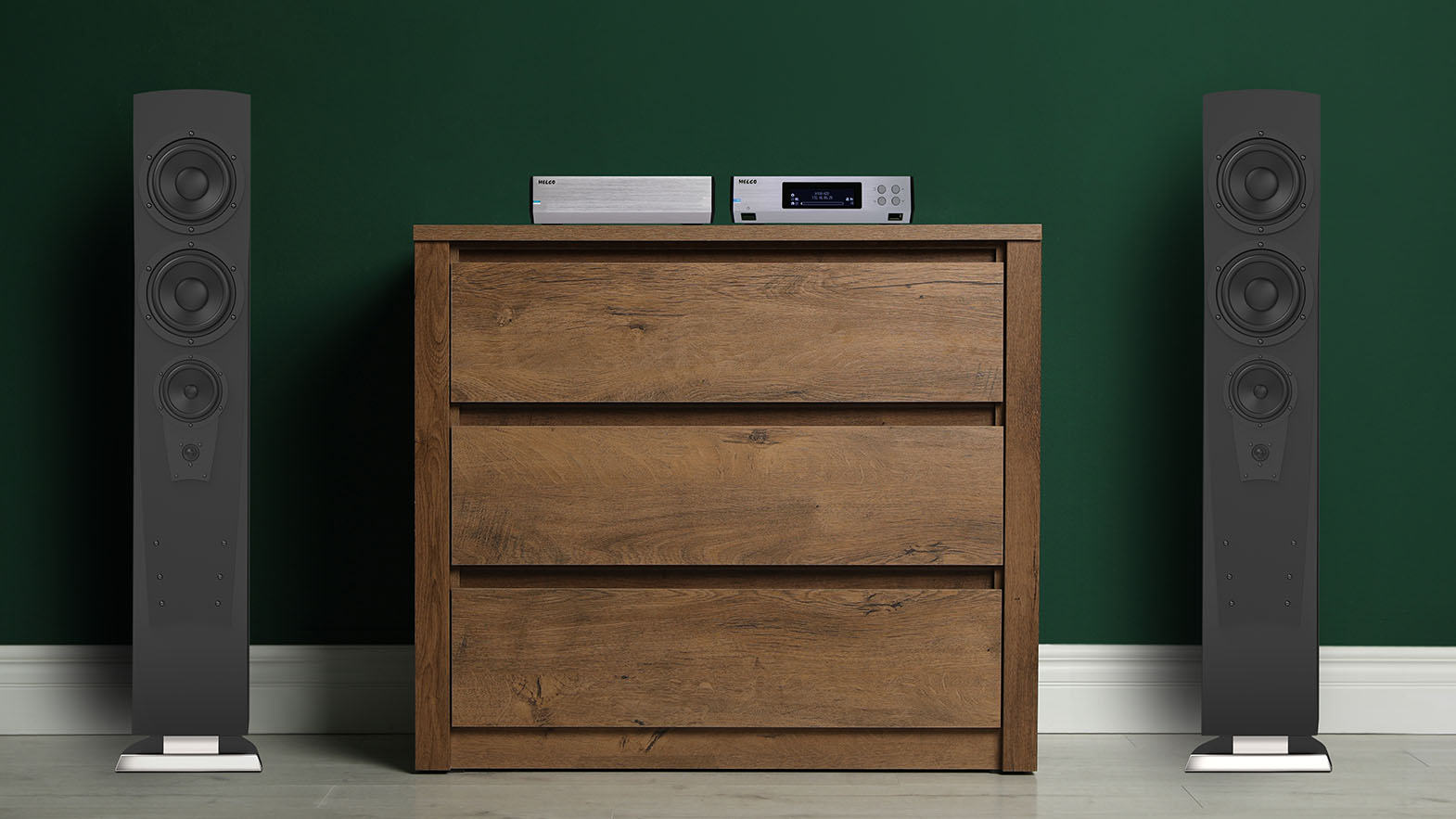
A little comparison.
As you may have noticed, most of the pictures in this story are from my friend Sandu’s place, who is the host of SoundNews.net and a fantastic YouTube reviewer. This is because I helped him fine-tune his system when he had the exceptional Raiho TD2.2 speakers in his possession. We spent a lot of time listening, comparing, and thoroughly enjoying the exceptional quality of the system he had put together. We were so thrilled with the improvements we made by refining and cleaning up the network source for streaming that we captured many pictures. Since my friend Sandu is a much better photographer than I am, I didn’t even consider taking more pictures of my own system. And I did not want to spoil the great memories of those Raidho speakers, which were a technological marvel.
As he mentioned in his excellent review of the LHY Audio SW-10 switch, we improved significantly by using fiber optic and an audiophile switch. We compared Melco S100/2 with SW-10, and my friend briefly depicted the differences between those two excellent components in his review. I need to unravel some more details.
Two are always better than one!
I compared the direct connection to the Roon server of Melco S100/2 and LHY SW-10. Having them both in the network path leads to better results every time. And not just marginally better. I always lost refinement and sound relaxation when removing one of the two switches. The effect is less impactful having the Melco S100/2 as the system’s single switch than LHY SW-10. It is a sad story, I know…
Melco S100/2 versus LHY SW-10.
Another comparison I ventured into was changing the location of each switch in the network chain. I was shocked by the difference, a much more significant gap than having only one or two switches at a time in the system. Melco S100/2 at the streamer side performed incredibly, and the differences between the switches were in every aspect of the sound quality.
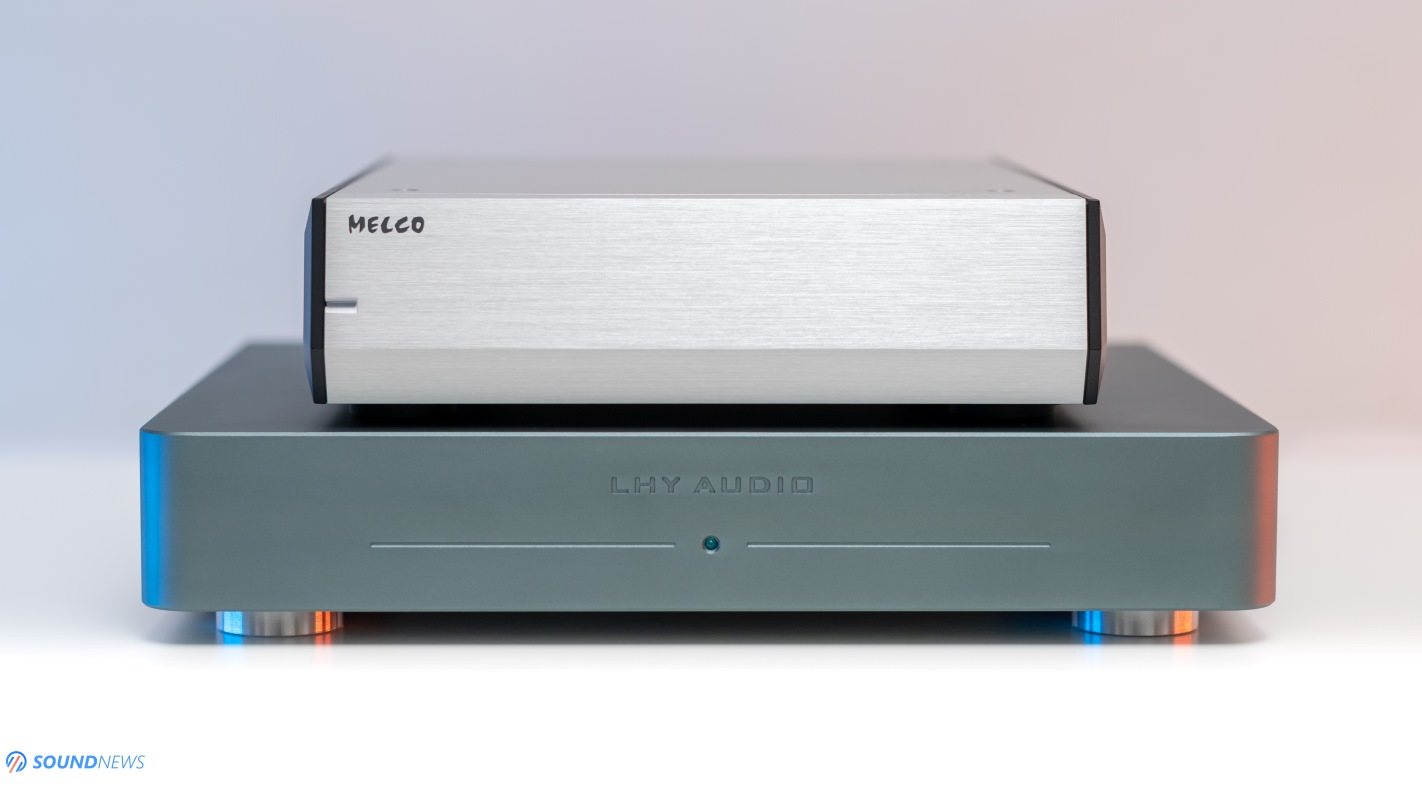
A revelation.
The Melco S100/2 delivers a refined and immersive listening experience. The sound quality is enhanced with a blacker background, increased dynamic energy, and more expressive nuances. The music gains a full-bodied, natural sound with lively dynamics that enriches the musical landscape and infuses it with emotional depth. The bass notes resonate with greater authority, giving the sound a round and robust quality. The music acquires a deeper foundation, and a sense of spatial realism makes the soundstage expansive, where instruments and vocals occupy apparent positions, creating a sense of presence and authenticity. Overall, the Melco S100/2 offers liveliness and detail, a more expansive and extended sound, greater vitality, and a more analog sound by not emphasizing the details in a specific frequency range. It was a revelation, and the improvement was solid enough to consider it as the leading partner in the speaker system.
Not that the much cheaper ($1.349) LHY Audio SW-10 is not a significant improvement in any network environment, but Melco S100/2 ($3.395) is clearly a more refined piece of equipment. I suspect the buffer memory makes a lot of difference between these two excellent audiophile switches. It may also be the power supply, FARAD Super3, used to power the Melco S100/2, giving it an upper hand. If we add the price of this power source, the cost difference between those two is going much higher. Then, there remains the question of diminishing returns.
I made a shocking discovery that two devices worked better when used together rather than independently. However, this may depend on the network configuration, and the impact could be difficult to replicate in other environments. I learned from this experience to never assume and always listen. Additionally, individual preference plays a role in determining which setup is best. The only recipe for success is to use an optical connection and a high-quality audiophile switch, which will make a significant difference in sound quality 99% of the time.

The ADOT Glorious Isolation
In the Melco S100/2 and N100 packages, I found a flyer from a new company- at least to me – Audiophile Digital Music Masters. ADOT (Audiophile Digital Optical Technology) designs and builds a precision optical fiber connection system for the isolation of high-end audio systems using fiber optic components, which are carefully optimized for hi-fi use.
These guys, recommended by Melco, successfully replicated in a plug-and-play package what we tested and tried to improve over the past year. That is so great as now the audiophiles united in the strong desire to improve their networks can get it in different preconfigured packages, a fully working recipe, totally free of any questionable experiments.
Melco S100/2 is the best Audiophile-Level Sound Enhancement that I have heard.
This is the conclusion. For me, the Melco S100/2 network switch is a must-buy. It profoundly elevated audio streaming playback by enhancing many aspects: noise floor, clarity, dynamics, and overall musicality and naturalness. It is the best that I have heard up to date.

PROS:
- Audiophile-level sound enhancement
- Refined power circuit and interfaces
- Buffer memory for completely removing the jitter
- High-quality build
- Multiple ports: two SFP optical, two streaming 100Mbs, 6 Gigabit RJ45
- Extremely low noise floor
- Perfect timing and a huge increase in dynamics
- Full-body, natural sound with more expressive nuances
- Emotional and analog reproduction
- Elevates the potential of any streaming setup
- Easy upgradable with a better power supply
- Silver or black color option
CONS:
- More expensive than other alternatives
- Power supply upgrade will add to the cost
I want to thank the local dealer and retailer of Melco in Romania, AV Shop, for their help and the opportunity to listen to and compare Melco products. Discovering this brand was a really great experience. Melco S100/2 can be acquired here in Romania, or you can search for a dealer in your region.
For the outstanding performance of Melco S100/2, I have to award it with our highest honors: The Gold Award.







